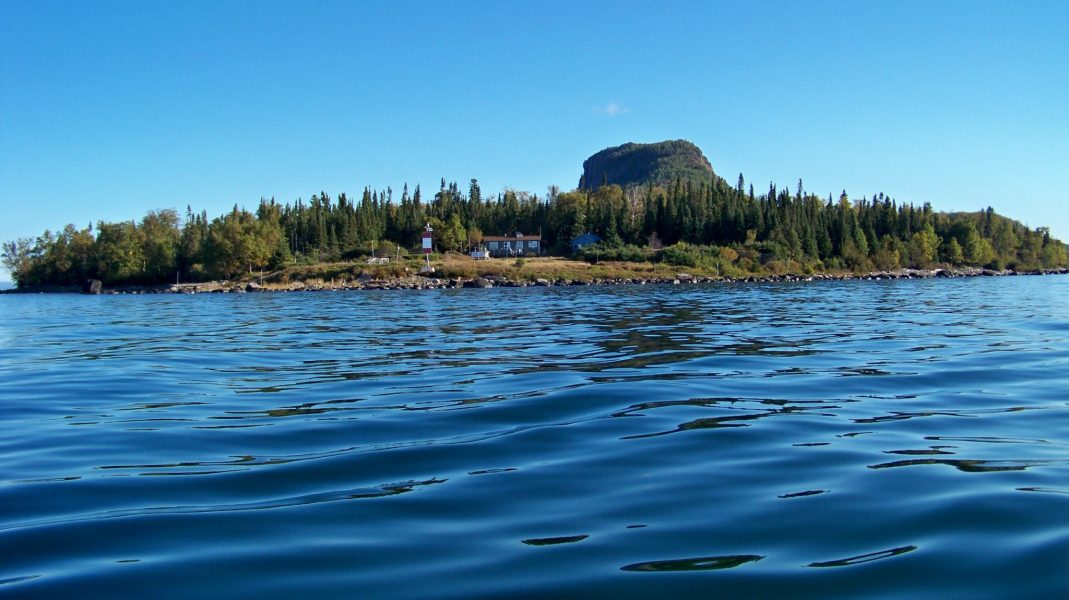Flocking to the Foot of the Giant
By Emma Christensen, Photos courtesy of Thunder Cape Bird Observatory
The Thunder Cape Bird Observatory, located at the tip of the Sibley Peninsula, attracts only the hardiest of visitors. Outdoor enthusiasts find challenging hiking and stunning views; migrating avian visitors, by contrast, find a safe haven of shelter and food. In the quarter century since the observatory was established, master banders and volunteers have banded hundreds of thousands of birds.
Rinchen Boardman has been the observatory’s master bander since 2014. He explains the importance of Thunder Cape to spring migrants, who travel hundreds of kilometres over the largest and coldest body of water they will ever cross, Lake Superior. “After Isle Royale, from a bird’s-eye view, the tip of the peninsula is one of the first landing spots,” he says. Hawks and other raptors are attracted to the Sleeping Giant’s 240-metre-high cliffs—among the highest in Ontario—because of the updrafts they generate.
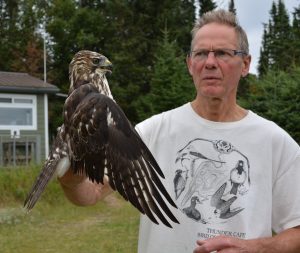
These features caught the attention of Ministry of Natural Resources scientist Dr. David Hustle in the late 1980s. “There was the incentive to establish a monitoring station here that would be representative of the birds breeding north of Lake Superior,” says Allan Harris, chair of the observatory, which operates because of partnerships between the Ministry of Natural Resources, Sleeping Giant Provincial Park, Thunder Bay Field Naturalists, and Bird Studies Canada.
A field test was conducted in the fall of 1991 by a group of birders who set up camp at the cape when 182 species were recorded and 4,390 birds were banded. The following year, the accommodations were upgraded from tents to a small cabin, which is still in use today as living and banding quarters. The structures at Thunder Cape—including two cabins, a viewing platform, and an observation tower—were built almost entirely by volunteers.
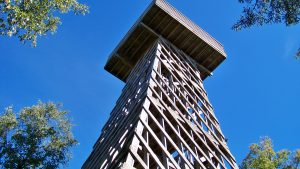
Volunteers are still vital to the operation of the observatory. During each seasonal migration, from early April to early June, and from late July to late October, Boardman coordinates teams of up to six volunteers. He welcomes applicants of all ages and skill levels, as long as they are prepared for the conditions.
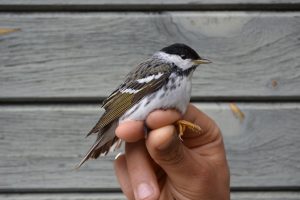
“It’s a very intense, nearly 24-hour experience, and it’s very unique. Most other stations have [better] access and more amenities than we do,” he says. Boardman and his team get up before the sun to set up mist nets, which look like fine fishing nets stretched between the trees. Birds that have flown in are carefully disentangled. Team members also take turns on “watch” from the viewing platform in all kinds of weather, identifying and counting birds in flight or on the water.
For volunteers, one of the few “indoor” jobs in the course of the workday is assisting Boardman in the banding laboratory. Here, birds are weighed, measured and fitted with a small metal band that identifies their banding location.
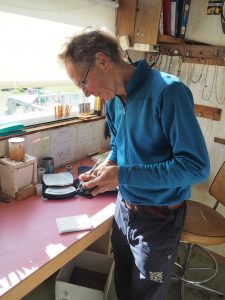
Visitors are also welcome, but Boardman emphasises the importance of arriving early. “The protocol runs for seven hours and it commences half an hour before sunrise. Most often, visitors come after we’ve finished our morning’s work,” he says, adding that it takes three to four hours to hike in from the nearest trailhead.
The remote location of Thunder Cape deters crowds of people, if not flocks of birds. But those who are willing to overcome the isolation are rewarded by witnessing the miracle of migration first-hand. “What still enthralls me are the millions of birds—rivers of birds—that fly at night,” says Boardman, “There are so many of these tiny creatures that weigh 5 grams or 12 grams who can somehow find their way to Colombia and back.”

Learn more at tbfn.net/thunder-cape-bird-observatory. Want to contribute? Visit tbfn.net/online-membership-form and direct your donation to the Thunder Cape Bird Observatory.


